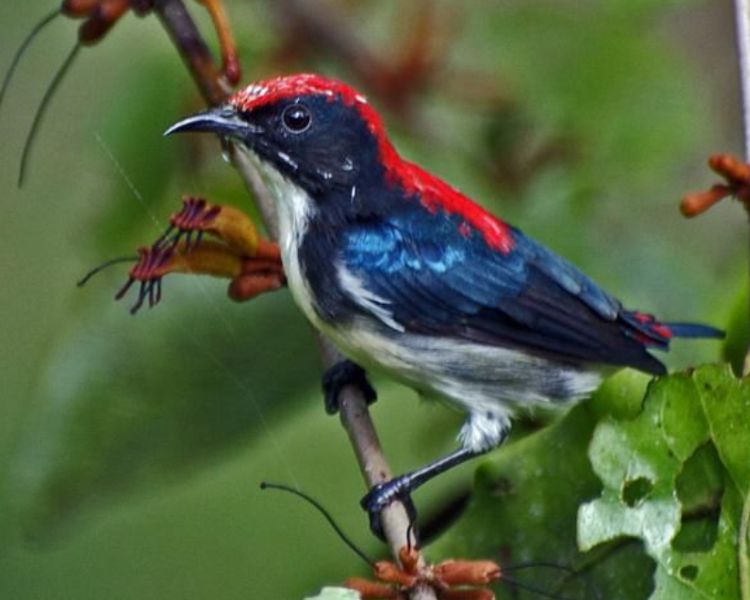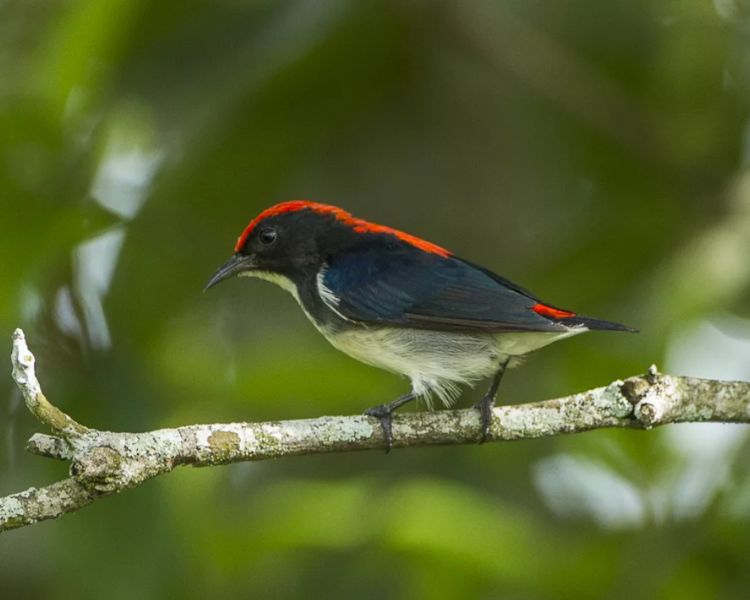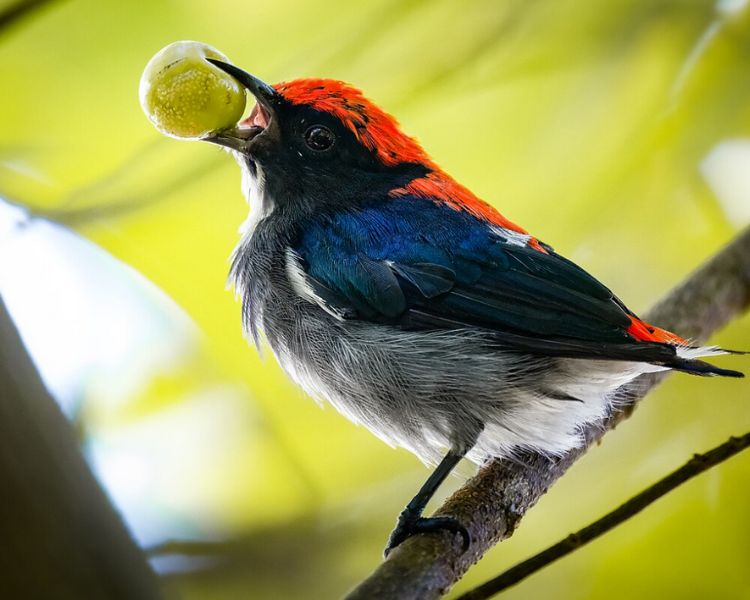In the heart of lush, tropical forests, a hidden gem of the avian world dazzles with its captivating beauty –
the Scarlet-backed Flowerpecker (Dicaeum cruentatum).
This petite and vibrant bird, no bigger than a human thumb, is a testament to the intricate artistry of nature.


Appearance:
The Scarlet-backed Flowerpecker boasts a striking combination of colors that can take your breath away. Its name gives away its most prominent feature – a vivid scarlet-red back that contrasts dramatically with its iridescent, deep blue wings.
Its head is adorned with a jet-black cap, highlighting the brilliance of its crimson throat. The sheer contrast of these colors against the lush green backdrop of its habitat is a visual masterpiece.


Size:
Measuring a mere 8-10 centimeters in length, this tiny bird is a testament to nature’s capacity for creating beauty in even the smallest of packages.
Its diminutive size adds to its charm, making it all the more enchanting to observe.


Behavior: Scarlet-backed Flowerpeckers are as delicate in their actions as they are in appearance. They are nectar-feeders, flitting from flower to flower with unmatched grace. Watching them delicately sip nectar from blossoms is like witnessing a ballet in the treetops. They also have a penchant for small insects and fruits, adding variety to their diet.
Song: Nature has gifted these birds not only with physical beauty but also with a melodious voice. Their songs are a cheerful symphony, filling the forest with their sweet, high-pitched chirps. These musical notes are a reminder of the vibrant life that thrives in the jungle.
Social Nature: Scarlet-backed Flowerpeckers are typically seen in pairs or small groups. Their social interactions are endearing, with frequent displays of affection between mates. These communal gatherings reflect their cooperative and social natures.
Conservation: While these avian gems continue to enchant those fortunate enough to encounter them, they also face challenges in the form of habitat loss and fragmentation. Conservation efforts are crucial to ensure that future generations can also revel in the beauty of the Scarlet-backed Flowerpecker.


In the intricate tapestry of nature, the Scarlet-backed Flowerpecker stands out as a symbol of beauty, fragility, and harmony. Its existence is a reminder of the awe-inspiring diversity that our planet holds. Let us cherish and protect these delicate jewels of the avian world, for they are a testament to the enchanting wonders that surround us.




